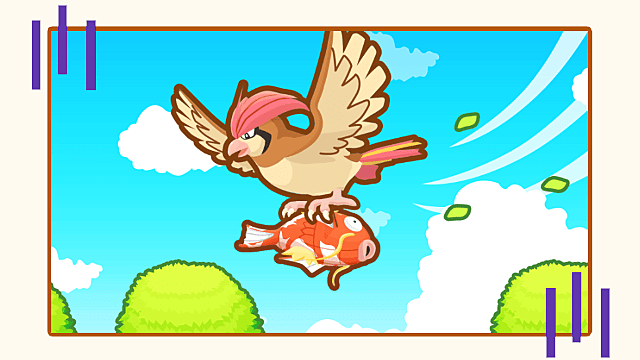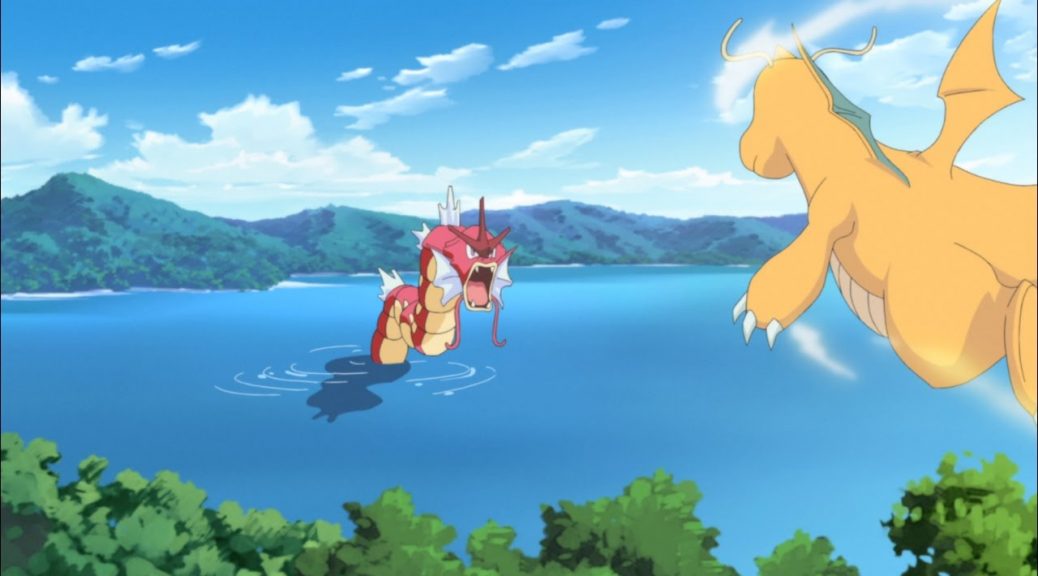Lake of Rage after Team Rocket
Team Rocket’s scheme not only failed, it had devastating effects on the larger habitat making up the Lake of Rage.
Magikarp, while inherently weak and typically left unused in battle, has a very powerful splash that allows it to jump incredible distances above the waters surface. Fanatics of this Pokémon’s ability have long since applied this to competitions; the winners having the healthiest, heartiest Magikarp that can leap the tallest distance from the surface of the water.
Yet despite this, it is still known by many as the world’s weakest Pokémon. Team Rocket is no exception. Though many flock every year to Lake of Rage scouting for jumping Magikarp to catch and train for their competitive arsenal, they may find that this year is going to prove a little more scarce and difficult. Team Rocket, in yet another ecologically wretched scheme, has devised a way to forcefully evolve Magikarp—that is, they have forcefully evolved many of the lake’s Magikarp into Gyarados long before they were ready to evolve, and the consequences have been disastrous.

“We have a lot of confused Gyarados,” one scientist states. “They’re small and weak as a consequence of being evolved at a time in their natural growth phase where they weren’t ready to be. They will not make it on their own in the wild here.”
Many of these Gyarados will have to be relocated to rehabilitation facilities where they will spend the rest of their natural lives, being taken care of in sanctuary by the combined efforts of Day Care workers and Gyarados specialists.
The Magikarp population has also significantly dwindled as a result of Team Rocket’s ostentatious nature. Before the event the Lake of Rage spouted an average of 14 Magikarp per 5.5m³. Today there is less than five per 5.5m³.
Lake of Rage ecologists, those who have been studying and managing the lake for the past few decades are both heartbroken and infuriated, but also determined. As part of their plan, they have begun asking breeders from Kanto, and even all the way to Kalos, to consider donating Magikarp eggs to be hatched and released back into the lake as a restoration effort of the Magikarp population, much to many Day Care workers’ delight.

Part two is utilizing Rangers’ abilities to temporarily tame Pokémon to relocate all those sickly, small, and scared Gyarados to conservation centers where they won’t have to live in fear and get bullied out by the dominating, healthier Gyarados.
One avid watcher of the lake reports, “The Gyarados are angry! It’s a bad omen!”
The lake is suggested to have been formed many years ago by rampaging Gyarados, creating a crater which was then filled in with storm water, giving us today’s Lake of Rage. If the lake, being the only home these Gyarados have ever known, is being disturbed in any sort of way, be it ecological or by the surrounding environment, we are going to notice their disturbance as well.
The Pokémon in the surrounding area are no exception either, according to Lake of Rage ecologists. Rattata, which are common to the grassy fields surrounding the lake, have also been affected. There’s an increase in pre-evolved Raticate to deal with now, as well.
Trainers in the area have also been taking advantage of the weakened, but stronger forms, of Pokémon previously unobtainable to them, much to the frustrations of the scientists.
“I battled a fisherman the other day around the lake who had a level 16 Gyarados. It was way too easy to defeat, and I don’t think that’s fair to the poor creature, at all,” one scientist noted.
In order to combat this strict, regulations need to be put in place regarding what level a Gyarados needs to be, before a Trainer can legally keep it. Anybody trying to competitively battle a Gyarados below level 20, outside of proper training and rehabilitation techniques, will be fined and have their Gyarados confiscated.
“It’s a quality of life issue. Yes, these Gyarados inherently belong in the wild, but it’s not fair to literally dozens of Gyarados for us to do nothing and let them potentially starve or get attacked en masse when with a little bit of effort and love for the species, we can give each of these Gyarados a happy, and relatively healthy life,” one Day Care Worker (who wishes to remain anonymous) reports. “We’re taking this as a learning experience, and moving forward, hopefully we never repeat something even remotely close to this.”
Edited by Aldo, Arcaneum and bobandbill.
